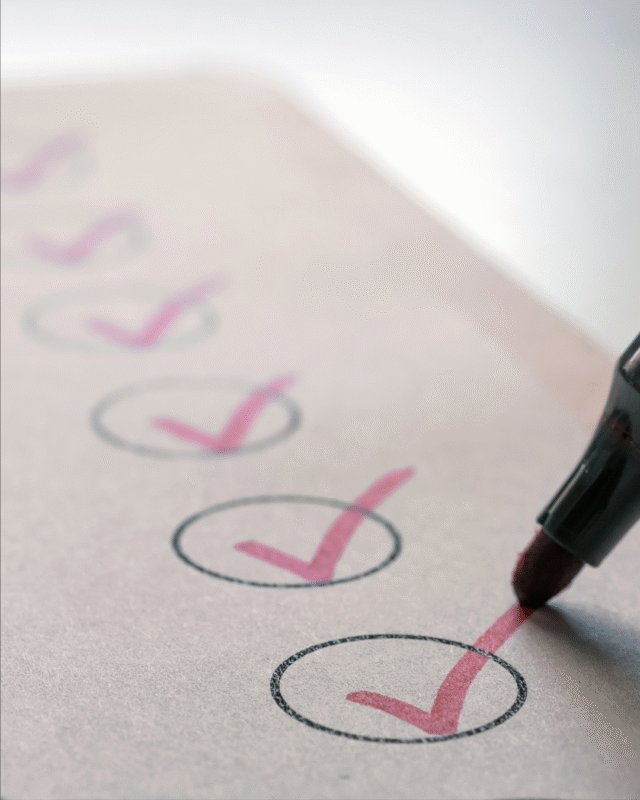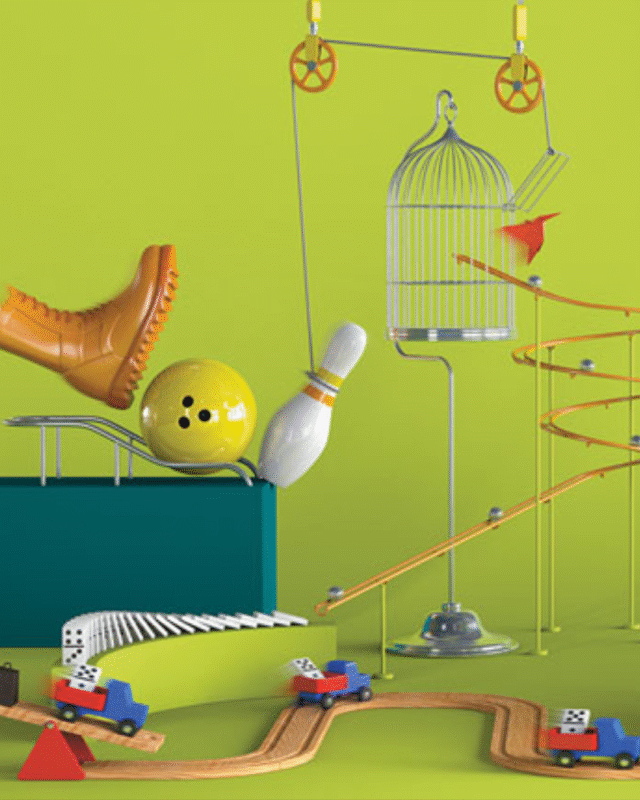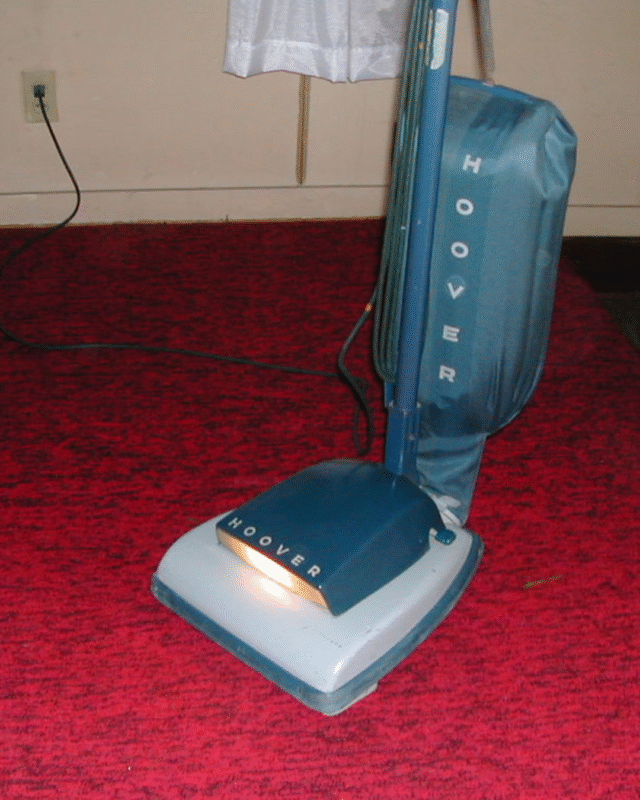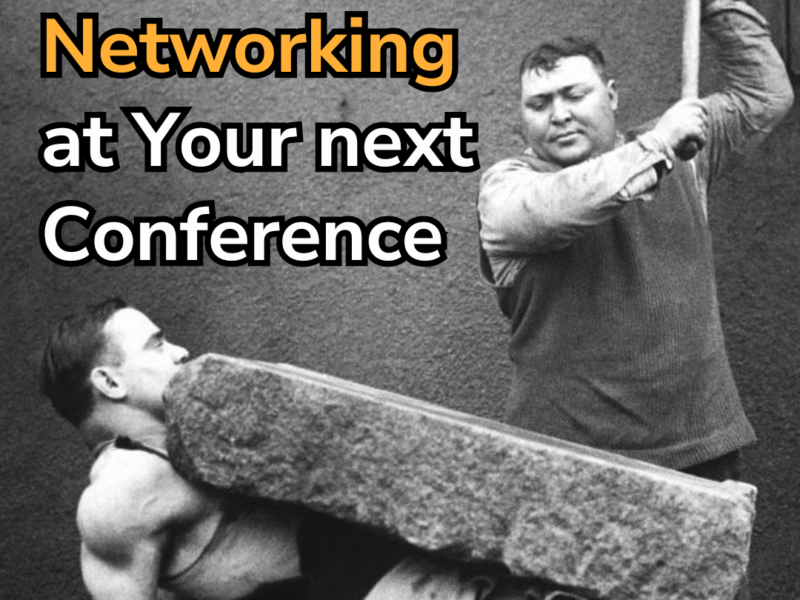May 20, 2025
Do you know the difference between a conference and a class reunion?
One should be for catching up.
The other should be for getting ahead.
But I watch so many people treat the two exactly the same, and those folks end up leaving conferences with full swag bags and empty calendars.
I’ve made that mistake.
I’ve also done it differently.
When I’m most successful, I have one overarching principle and seven tactics to execute on it.
The principle?
Show up with a plan.
Define Success Before You Show Up
I’m not looking to meet everyone. I’m looking to meet a couple of the right people. The kind of people I’ll still be talking to next quarter, in a year, over a decade. The kind where there’s real potential, not just polite conversation.
Have a list of specific people or types of people you want to connect with. Your “targets.”
Once I know that, I shape everything around it.
7 Habits That Actually Pay Off
Here’s the no-fluff approach that works for me. These consistent habits turn random handshakes into actual momentum.
1. Throw Bait in the Water

Most people open with autopilot lines like “What do you do?” or “Where are you based?”
Guess who else opens conversations like that?
Everyone.
I want people to remember me, and those conversations will make me forgettable.
Instead, I ask something that gets people talking about what matters to them. A tradition they love. A place that shaped them. A decision that changed things. When they tell that kind of story, the brain releases dopamine.
People remember those types of interactions, so I’ll leave the weather to the local news.
2. Lead With Value

Don’t wait to offer something useful.
If I hear something in the conversation that triggers a connection, I offer it. An intro. A tool. A reference. I give it right there with no expectation of getting something in return. It’s part of my general networking philosophy, which is give, give, give, give, then ask (maybe?).
Sometimes I don’t have an ask for a decade. Sometimes I never ask. I like to be frugal with them and make them only when it would actually help. In other words, I’m not making an ask just to
The faster you show you’re helpful, valuable, or that you get it, the faster people get excited to have you in their network
3. Be a Sniper, Not a Spray Gun

There’s always that guy who asks a question just to hear himself talk.
Don’t be that guy. If you ask something during a panel, meeting, or group discussion, make it count. Open a door for a deeper conversation later, either with the speaker or with someone targeted in the audience. You can end up with a rewarding conversation out of it, and the other attendees will appreciate your thoughtfulness.
4. Follow Up Fast

Momentum fades if you let it. Use the 2 minute rule.
If I can send a note, intro, or file in under two minutes, I do it immediately. One time I sent an NDA between sessions, had a signed copy an hour later, and a meeting on the calendar for the following week. That happened because I didn’t wait.
Of course, I have to balance haste. I’d rather make a good impression than look sloppy, but
Follow up is where most conference networking falls apart, so the more I can do immediately, the more successful it’ll be.
5. Systematize the Follow-Up

The follow up is the hardest. Often everyone’s out late, has
After the event, most people mean well. But life gets in the way. It’s not just you, it’s everyone.
So have a system. Even if it’s not perfect, having ANY system is better than not having one at all.
Keep the conversation going. Even if your note says something like, “I’m still thinking about our conversation, and I want to keep it going. I’m traveling, so it’ll be a few days before I get back with you.” The simple acknowledgement signals you’re not forgetting about them and starts a thread and keeps momentum and positive motion fresh.
When nobody says anything for a while, even the best intentions fade.
6. Grease the Wheels Before You Arrive

A warm intro beats a cold start.
Before the event, I map out a few people I want to meet. Then I check LinkedIn or my contacts to see if there’s a connection in common. If there is, I ask for an intro. Doesn’t need to be long, just enough context to skip the small talk when we see each other in the hallway.
7. Blah Blah Bailout

Some “nice” people will never align with your objectives. Don’t let them suck up all of your time.
If I know we’re not aligned, I don’t let the chat linger. Because it will. These folks will suck your entire day if you let them.
But there’s a graceful way to pull yourself away. Introduce them to someone else who might be a better fit and move on. It’s graceful, efficient, and helpful for both you and them. And they’ll appreciate it more than you think.
Side Note: Lunch Tables Matter

Pick your table AND your seat deliberately. Too many people play it safe at meal time. They sit with their team or scroll their phones instead of using it as a time to make real connections.
That’s a miss.
Often I see multiple 1:1 conversations happening. The best conversations flow around the table. My goal is to help the conversation flow. I want them to feel inclusive, welcome, and connected. Then, I also get to steer the conversation away from the weather and towards my objectives.
If I can’t find a table where that’s happening, then I start one myself. Again, I want the interaction to be memorable.
How do you pick a table? Take one of these ideas:
- You can sit next to your targets. This is the best.
- If you don’t know many people, open your ears. Which table has the most robust conversation? That’s probably a good choice.
- Say they’re all the same. Picking a seat where you can survey the room is a good move. It will allow you to observe and move around when your targets walk into the room.
After the Event, Grade Yourself

Not by how many cards you collected. That’s irrelevant.
Ask:
- Did I meet the kind of people I came for?
- Did I follow through?
- Did I give more than I took?
- Did I build anything that might compound?
That’s the real scoreboard.
If you want to walk out with more than a branded notebook, don’t drift through the day. Be deliberate.
Give first. Move fast. Protect your time.
That’s how you capture the value you came for.

